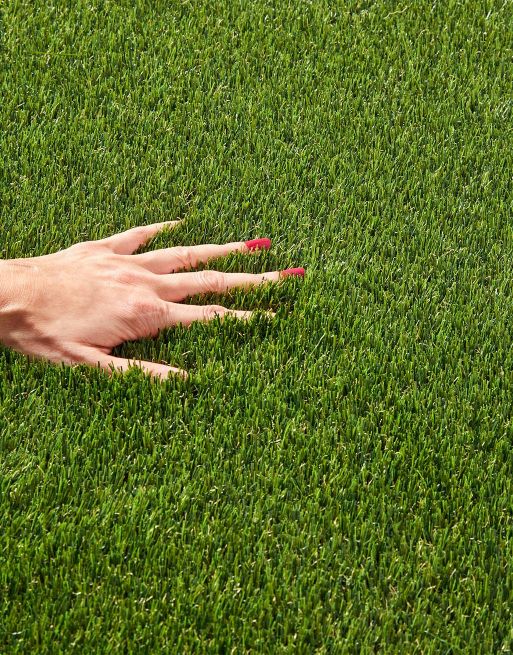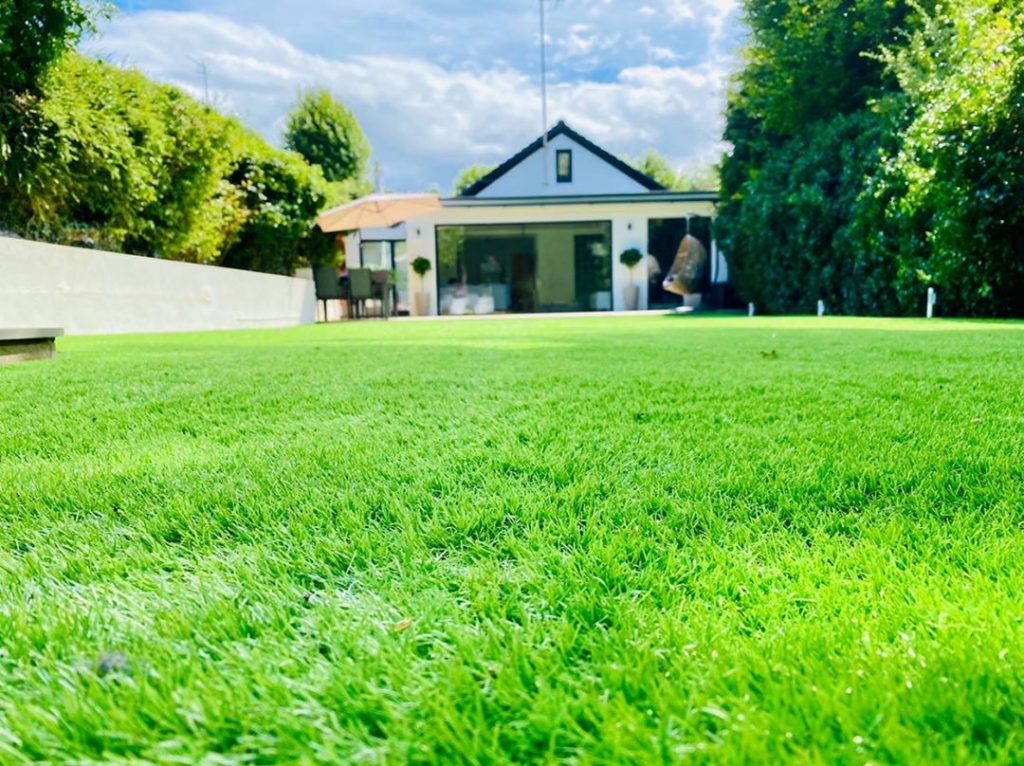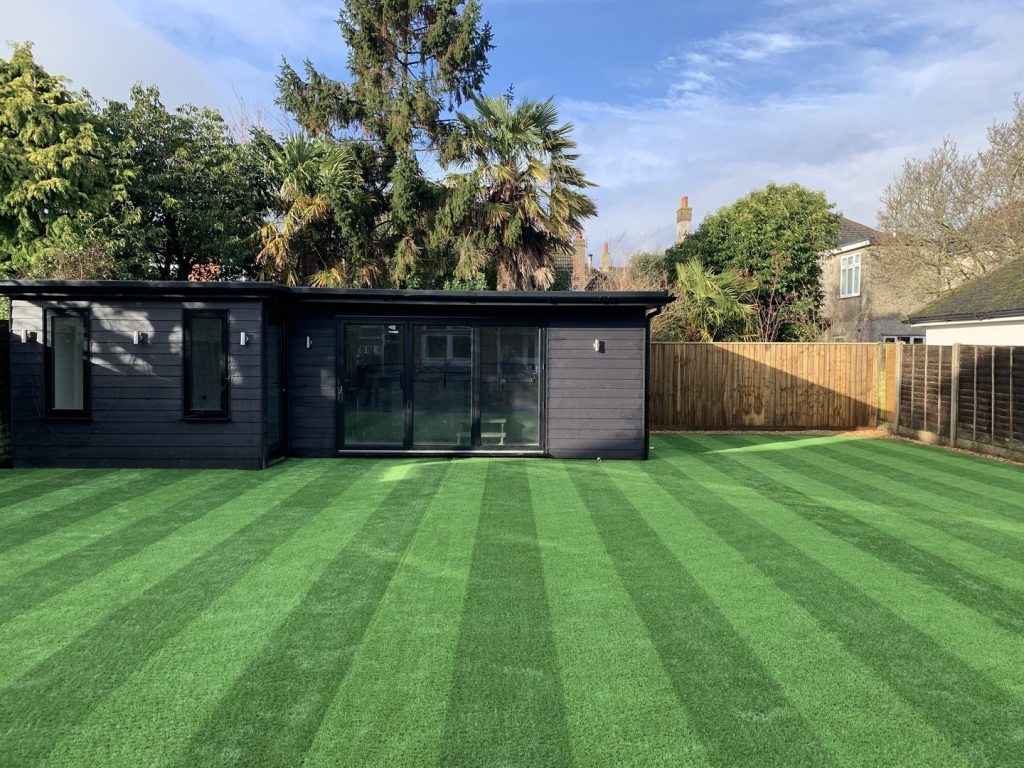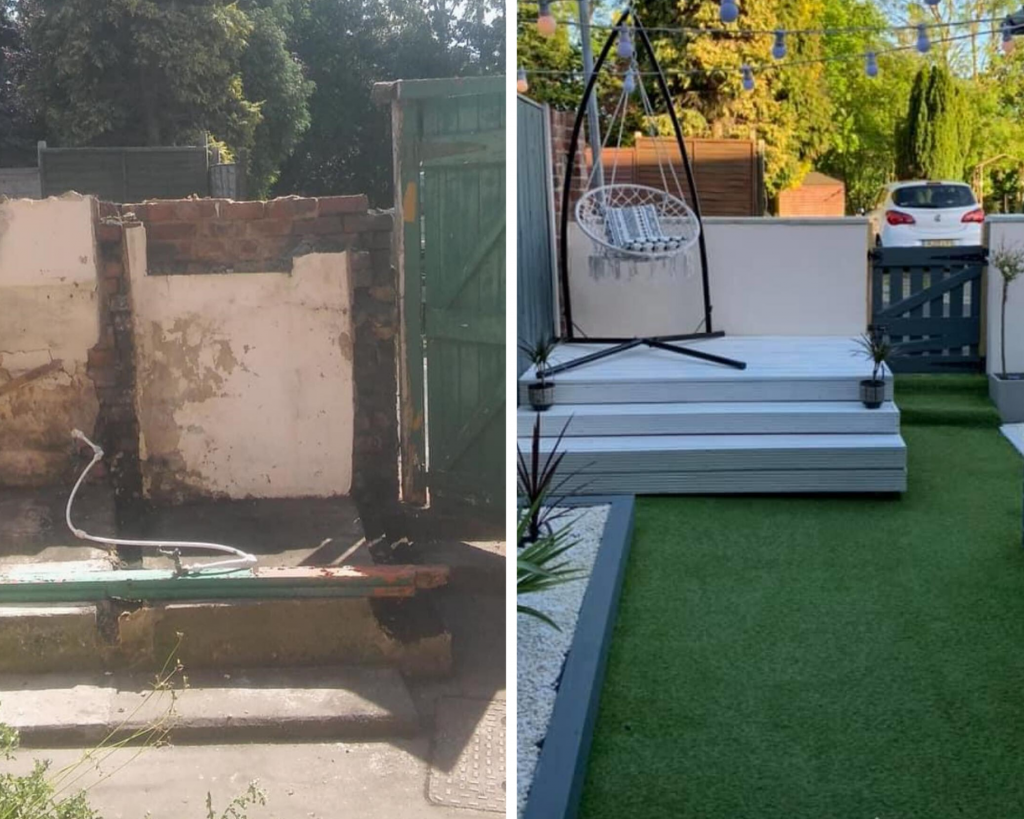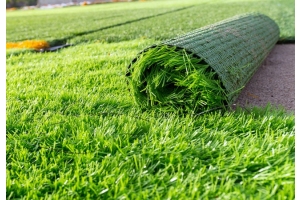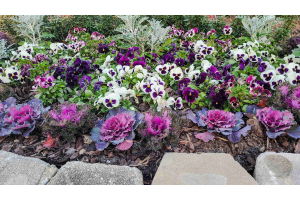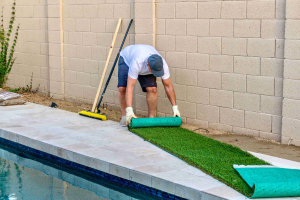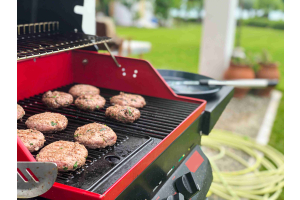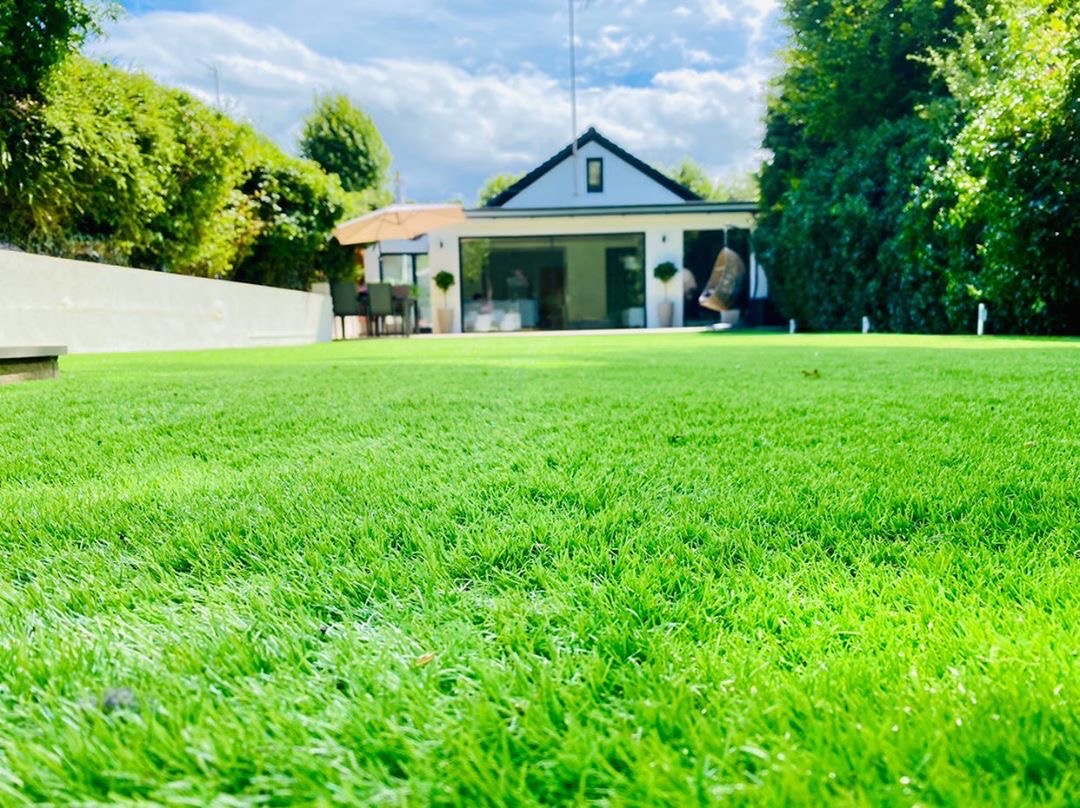
So you’re thinking about buying Artificial Grass? Makes sense with the wide range of perks it offers: Long lasting, low maintenance, looks great all year round, pet-friendly, child-friendly - the list goes on. However, there are a few things you should consider before choosing your Artificial Grass, to help you make the right choice. Let’s take a look at what these are...
1. Budget
First thing is first. With any project, you should always start with a budget. Your budget will determine your options when choosing Artificial Grass.
It allows you to set expectation levels on products, timing and ensures you work within your means. For the savvy-spenders, this is a great way to shop smart and get more bang for your buck.
With Artificial Grass, the best way to work out what budget you will need and if it can be achieved, is to measure the area you are wanting to lay your grass. This will let you know the amount of grass needed so you can start your search for your perfect lawn and shop around for the best price.
You will also need to consider additional material you may need for your installation. Hardcore, sand, limestone chippings for those with pets to neutralise odours. Making sure you know what you will need prior to a purchase will prevent any surprises further down the line.
We’ll cover the full installation process later in the blog.
Artificial Grass Ranges
At Grass Direct, we offer a wide range of Artificial Grass to suit a range of needs, shades and budgets. From Essential ranges to Elite ranges, and everything in between, we have options to suit everyone!
 |
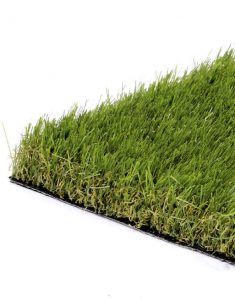 |
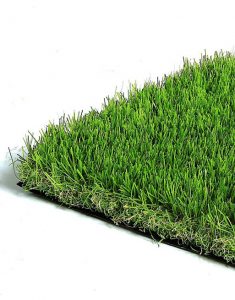 |
 |
Tips for Working With a Budget
We often hear “Is Artificial Grass expensive?”. The answer to that is, ‘It doesn’t have to be!”.
There are lots of factors that can affect your budget. Garden size, cost of fitting, type of grass. So we’ve got some handy tips for how to best stick to your budget along the way.
Sales
For those who are working with a smaller budget, we have a few tips that can help you save those precious pounds. For instance, looking out for sales is a great way to save when buying Artificial Grass. If you plan your garden transformation project in advance, you can put yourself in a great position to look out for sales and create your dream garden for less.
Artificial Grass Off-Cuts
Artificial Grass Off-cuts (often referred to as artificial grass remnants or roll ends) are another way you can save money and stay within your budget when purchasing Artificial Grass.
Offcuts are exactly the same quality. They are simply just pre-cuts rolls of artificial turf. If your sizing matches the space you’re wanting to cover with grass then you are onto a winner.
In purchasing offcuts, you could potentially make a large saving when transforming your garden. It also enables you to purchase higher-quality ranges, which may have initially been out of budget.
2. Samples
Another thing you need to consider before choosing Artificial Grass is, samples. Instead of jumping into buying the first Artificial Grass you like the look of, or one that seems to be more budget-friendly than all the rest, we highly recommend you order samples before you buy.

This will allow you to compare colours, length, softness and quality, so you can get a true representation of the grass before you buy.
At Grass Direct, you can order up to 6 Free Samples and have them delivered straight to your door! Yes, you heard us; 6!
With a wide range of amazing grass ranges to choose from, we know your decision won’t be an easy one (no apologies there) So we like to give you the opportunity to narrow down and compare a generous amount, before choosing the perfect one for you.
3. Pile Height
Another factor you may have forgotten to keep in mind when choosing your Artificial Grass is pile height. Pile height refers to the total length of your Artificial Grass from backing to the tip of the blades.
You may be wondering why this affects your purchase, however, pile height plays a big role in the overall look and feel of your Artificial Grass.
Artificial turf comes in varied pile lengths. Shorter ones ranging from around 16-27mm, mid range around 30-37mm, with longer grasses being around the 40mm mark.
If you’re wanting a neat and tidy finish with that fresh-cut look, then a shorter grass (16-27mm) is the most suited option. It is also well suited to families with pets and children and those keen sports players. For a fuller, more luxurious look, we would recommend opting for a pile height of 30-37mm.
Longer grasses of 40mm and above, whilst providing a softer feel underfoot, can flatten over time due to the weight of the pile. The longer the pile, the more weight it carries. However, this is not something to worry about. A quick brush over with a garden brush will help the pile stand tall again. For more stubborn blades, a simple top up with a sand-infill will do the job. If softness is something you desire, a taller pile height is definitely the range for you.
4. Pile Density
Fourth up on the list of considerations before choosing Artificial Grass is pile density. Now this one is one that is often overlooked, but certainly shouldn’t be. Pile density affects the overall finish of your lawn.
Pile density refers to the number of fibres that are stitched to the Artificial Grass backing and how close together they are packed. The more fibres, the higher the density.
With low pile density grasses, the lawn may look sparse and thin in comparison to that of a higher density grass.
Artificial Grass with a higher pile density is suited to areas with higher traffic. This is because higher density grasses are more resilient. So if your kids like to spend a lot of time kicking a ball around in your garden, or you have heavy garden furniture to place on top. A higher pile density grass may be for you.
High density piles are usually around 18000 stitches per square metre and above. This is for those who desire durability as a key factor in their Artificial Grass.
Medium density piles are usually somewhere between 15000-18000 stitches per square metre. This type of pile density is great for your typical demands such as children, pets, and families who spend a lot of time in their garden.
Finally, lower pile density Artificial Grass is those with less than 15000 stitches per square metre. This type of grass is not typically used in a high traffic area due to being less resilient than the higher pile density ranges. However, that’s not to say this grass can’t be used in other places such as front gardens that aren’t heavily trafficked.
5. Colour
For many, this next consideration is one that will be towards the top of the priorities. As well as
Artificial Grass being host to a tonne of practical benefits, one other major benefit is how appealing it is on the eye. Sometimes, this appeal comes from the colour!
Now we all have a preference when it comes to the shade of our grass. Some of us like the darker pine green shade that’s rich in colour. Others like the lighter, more vibrant shades. And some want the best of both worlds and go with stripes!
At Grass Direct, our grass ranges all differentiate in colour, so there really is something for everyone. You should always order samples before making your final decision. Ordering multiple samples allows you to compare between ranges to see which one you prefer the most.
Note: Placing your samples in the region of where you are planning to lay your Artificial Grass is a great way of getting a realistic idea of the shade before buying. Different times of day will affect the look of your grass as the sun moves and the light reflects at different angles.
6. Installation
Last but certainly not least, let's look at the installation of your Artificial Grass and what you need to know before purchasing your new turf.
Hire a Fitter or Go the DIY Route?
When installing Artificial Grass, one thing to consider is do you need a fitter or can you fit it yourself?
Installing your Artificial Grass yourself is a great way of saving a few £££’s. Now we know what you may be thinking, “I’ve never installed Artificial Grass, how am I supposed to do that?”
Not to worry! Our easy to follow step-by-step fitting guide will provide you with all you need to know about installing Artificial Grass.
The DIY method will help you to save on installation fees as well as giving you the bragging rights when your neighbours asked who fit it.
For those who aren’t so confident in a DIY fitting, you can hire a local grass fitter to help you with your installation. In doing so we recommend you do a little digging first. Spend some time looking around for the best price and comparing quotes, as well as looking out for those with positive reviews. Most fitters will even have a website or page, where you can check out their previous installations too.
If you need help finding a fitter, our find a fitter service can help you find a fitter in your local area. So whether you’re wanting to install your Artificial Grass yourself and acquire a new skill, or you’re wanting to hire a professional, make sure you do your research first.
Sub-bases
Another factor you need to be aware of before deciding on an Artificial Grass installation, is sub-bases.
Artificial Grass is extremely versatile due to its ability to be fit virtually anywhere. However, due to this versatility and being able to be fit on a range of surfaces, you’ll need to know what goes underneath your Artificial Grass as it can differ depending on surface.
Fitting Artificial Grass to a Hard Surface
When laying your grass onto a harder surface such as concrete or decking, Artificial Grass Underlay is recommended to give that extra cushion underfoot and hide any subfloor imperfections.
When Fitting Artificial Grass to a Hard Surface the process differs slightly. Additional steps are taken to ensure your turf is secured properly and safely:
- Remove any dirt or debris from the surface.
- Add a coating of artificial grass adhesive around the perimeter, ready to receive the underlay.
- Place your underlay across the surface, making sure to even out any imperfections.
- Add a second layer of adhesive to the underlay, again around the perimeter.
- Stretch out your turf in order to remove any ripples.
- Even out your grass using a carpet roller, this will also help bond the adhesive.
- In dry conditions, dress your lawn with kiln-dried sand.
Replacing Lawn with Artificial Grass
When laying Artificial Grass in your garden, sharp sand with a weed membrane is the perfect pairing.
- Remove any existing grass from the dirt.
- Spray the area with weed killer to make sure all vegetation is dead & to prevent re-growth.
- Create a timber frame around the perimeter of your install. This will help secure the grass when using your fixing nails, in the final step.
- Compact the dirt until it becomes firm, this is to create a solid platform for the turf to be laid on.
- Add around 50mm – 75mm of MOT type 1 of Limestone chippings. Be sure to compact this as you have with the soil.
- Add roughly 15mm of sharp sand or dust granite over the dirt, you will need around 25kg of sand per 1m². This area needs to be firm but porous.
- Lay your weed membrane over the top of the sand and secure it with fixing nails around the perimeter.
- Line up your turf to one of the corners of your perimeter and lay the rolls flat over the surface to see how much you need to cut off.
- Trim the edges off your grass that do not need to be there.
- Use galvanised fixing nails to keep the joins in place. These fixing nails should be lined up with the timber frame to secure them.
So no matter what surface you’re fitting your Artificial Grass on, make sure you’re aware of the process of installing your lawn too. Whether you’re fitting your grass yourself, or hiring a professional, fitting to a hard surface or just replacing your lawn, this may impact your decision when choosing your Artificial Grass.
The Choice is Yours
Now we may have given you a few things to think about before choosing your Artificial Grass, however these are all important considerations in choosing your perfect lawn and achieving your dream garden.
If you have any more questions when it comes to choosing Artificial Grass, get in touch with one of our experts who will be happy to assist you.







